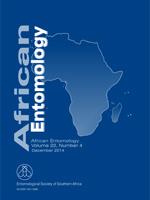The ant Pachycondyla sennaarensis (Mayr) (Hymenoptera: Formicidae: Ponerinae) is a small dark ant, a recent accidental introduction into Saudi Arabia. It tends to be found in or near human habitations, and it is particularly unpleasant because its sting can cause severe reaction in some individuals, and there are reports of fatal effects. Analysis of the poison apparatus of P. sennaarensis, locally known as the samsum ant, and comparison with two other native small black ants, Messor meridionalis and M. foreli (Hymenoptera: Formicidae), have shown distinct differences in the materials in their Dufour glands and clearly distinguish P. sennaarensis from the two Messor species. Pachycondyla sennaarensis showed only hydrocarbons in its Dufour gland dominated by nonadecene, nonadecane and heneicosane. The powerful venom revealed no volatile compounds. The Dufour glands of M. meridionale and M. foreli had characteristic mixtures of hydrocarbons, but no venom gland volatile compounds. Pentadecane and hepadecane were the major compounds of the gland in M. meridionalis while nonadecane and heneicosane were the major in M. foreli.
How to translate text using browser tools
1 December 2014
Secretions of Dufour's Gland in Some Ants (Hymenoptera: Formicidae)
A.M.A. Mashaly,
A.M. Ahmed,
T.M. Nunes,
E.D. Morgan
ACCESS THE FULL ARTICLE
It is not available for individual sale.
This article is only available to subscribers.
It is not available for individual sale.
It is not available for individual sale.

African Entomology
Vol. 22 • No. 4
December 2014
Vol. 22 • No. 4
December 2014
Dufour gland
hydrocarbons
pygidial gland
venom gland




